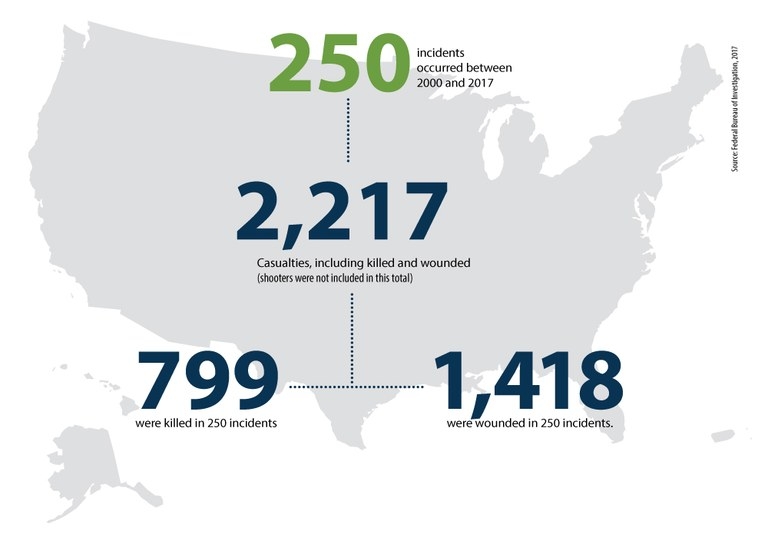ACTIVE SHOOTER – unfortunately it’s a term we hear almost daily in the news. From 2000-2017 there have been 250 active shooters in the United States with a total of 2217 total casualties including 799 killed and 1418 injured per www.FBI.gov. As you can see it is the new norm and won’t go away, it will only become more prevalent. Looking at the stats, you can see that it’s not just a big city issue as these incidents happen everywhere; and not just schools or post offices. Also, it’s just not an active shooter incident we need to be concerned about – its active violence or hybrid targeted violence which are all-encompassing terms that cover the situations we could respond to which include weapons used such as guns, knives, cars or IEDs.

I challenge you to do a self-assessment of your agency, your mutual aid partners, your EMS, and your law enforcement? Are we truly prepared for one of these incidents? I would say the answer to that question predominately throughout the United States right now is NO! Keep in mind we have departments who don’t train on the basics such as the Big 3, hose, ladders and SCBAs, so they are way behind the 8 ball when you mention a very high risk, low frequency event such as an active violence type incident. Even if you have trained or talked about these events – have you involved your local law enforcement? Your system will FAIL if law enforcement is not involved every step of the way.
The Rescue Task Force (RTF) Concept was born out of the Columbine High School shootings where some of the injured waited over 4-hours for treatment and bleed to death. The concept of the Rescue Task Force came from the Arlington County (Virginia) Fire Department. Looking at active shooter events around the country, these fire department leaders created a model that enables emergency medical services (EMS) to provide emergency medical intervention faster and within the Incident Command System (ICS) construct. The RTF should be able to integrate easily into public safety agencies anywhere. The RTF consists of EMS and law enforcement personnel who work together to provide immediate basic medical care to victims. This differs from Tactical EMS, which usually focuses on medical care for the responders.
While this short article is just to serve as a primer to get you thinking about the concept, here are some of the key points you will need to address:
- NFPA 3000 (Yes, there is now a standard that addresses response to these types of incidents!)
- Start with Law Enforcement
- Unified Command and Control
- Rescue Task Force Operations in the Warm Zone
- Triage/Treatment/Transport
- Mass Casualty Plan
- Where do I get all these resources from?
Come join us this September in Tinley Park, IL at the ISFSI Fall Conference to learn more about this concept and how to institute it at your fire department?